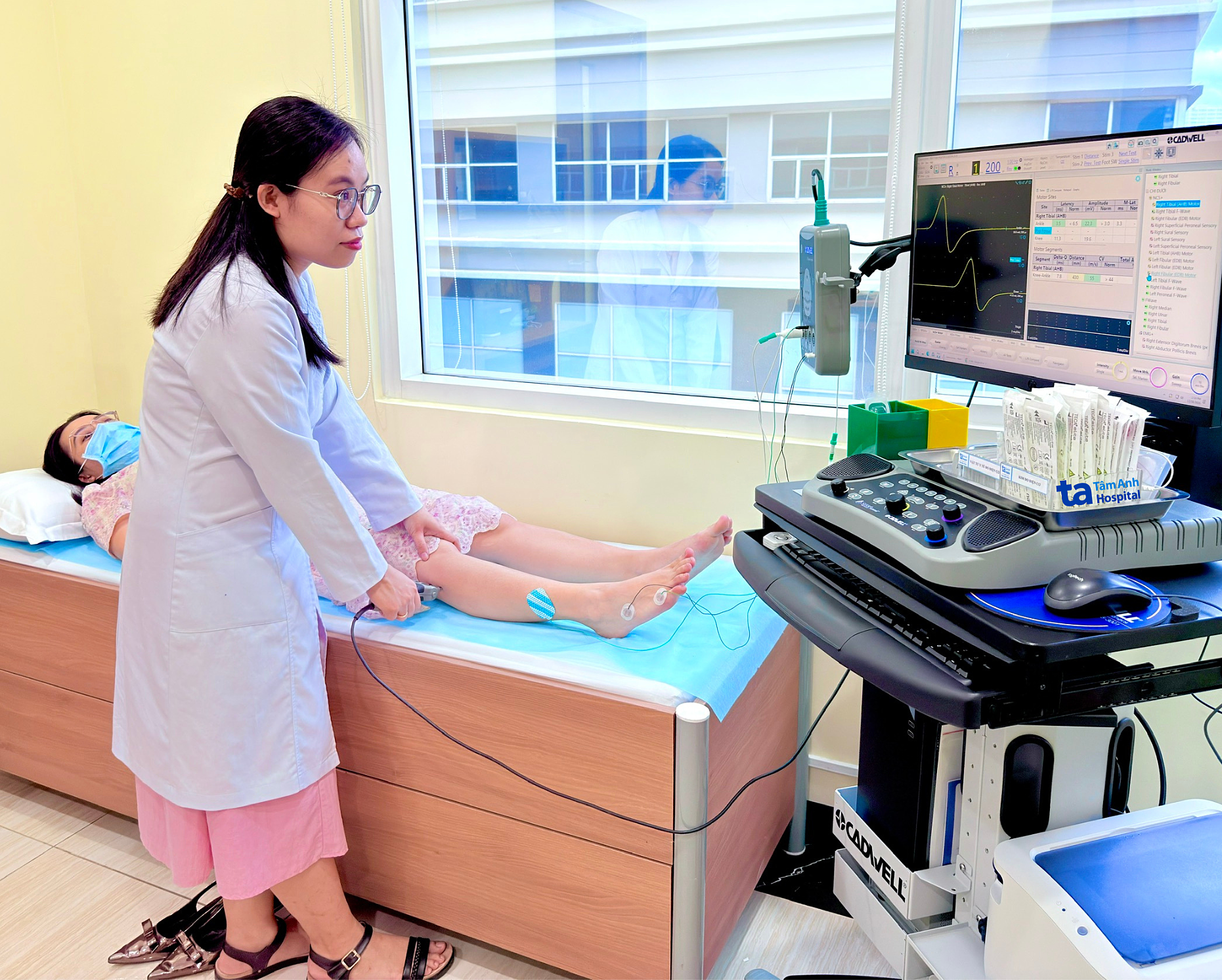Answer:
Myasthenia gravis is a chronic autoimmune neuromuscular disorder. The immune system mistakenly produces antibodies that attack acetylcholine receptors at the neuromuscular junction, disrupting the transmission of motor signals. This results in muscle weakness and rapid fatigue during exertion. Symptoms often improve after rest, which can lead to confusion with normal fatigue.
Myasthenia gravis can be localized to the head, face, and neck, causing drooping eyelids, double vision, difficulty chewing or swallowing, or fatigue after prolonged speaking. In more severe cases, the disease can spread to the respiratory muscles, causing difficulty breathing and leading to a myasthenic crisis. This is a life-threatening emergency that requires immediate medical attention.
 |
Doctor Thu Hang performs electromyography, assessing neuromuscular transmission function for a patient. Photo: Tam Anh General Hospital |
Doctor Thu Hang performs electromyography, assessing neuromuscular transmission function for a patient. Photo: Tam Anh General Hospital
Your symptoms of rapid fatigue, shortness of breath, and weakness when climbing stairs or talking for extended periods could indicate myasthenia gravis. For an accurate diagnosis, you should consult a neurologist. The doctor may perform a physical examination and conduct tests such as asking you to look at the ceiling for a minute or applying ice to a drooping eyelid to observe any improvement. If myasthenia gravis is suspected, an electromyography (EMG) may be ordered. This technique records the electrical activity of muscles and assesses neuromuscular transmission.
EMG typically consists of two parts. Nerve conduction studies involve repetitive nerve stimulation, where a series of electrical pulses (usually 10) are delivered to a suspected weak muscle, such as those around the eyes or shoulders. If the muscle's electrical response decreases with each pulse, it suggests impaired neuromuscular transmission. In needle EMG, a small needle is inserted directly into the muscle to evaluate its activity at rest and during contraction. These combined tests help differentiate muscle weakness caused by myasthenia gravis from other conditions like muscle diseases or peripheral nerve disorders, enabling an accurate diagnosis.
Blood tests may be conducted to detect specific antibodies like anti-AChR and anti-MuSK to identify the type of myasthenia gravis. A CT scan or MRI of the mediastinum might also be ordered to examine the thymus gland, an organ closely linked to the disease's development. Many patients with myasthenia gravis have thymus tumors or an enlarged thymus.
Dr. Do Thi Thu Hang
Neurology Department
Tam Anh General Clinic, District 7
| Readers can submit questions about neurological conditions here for doctors to answer. |












